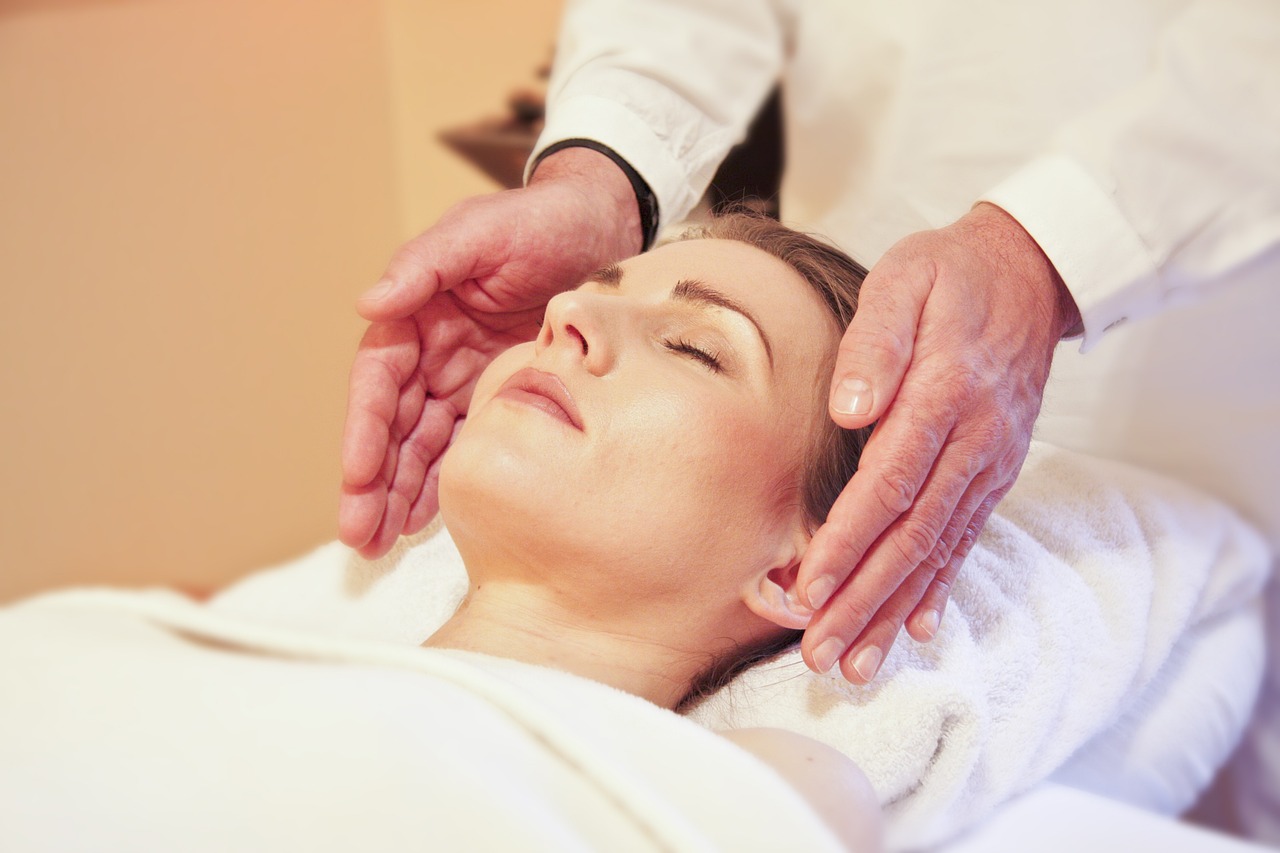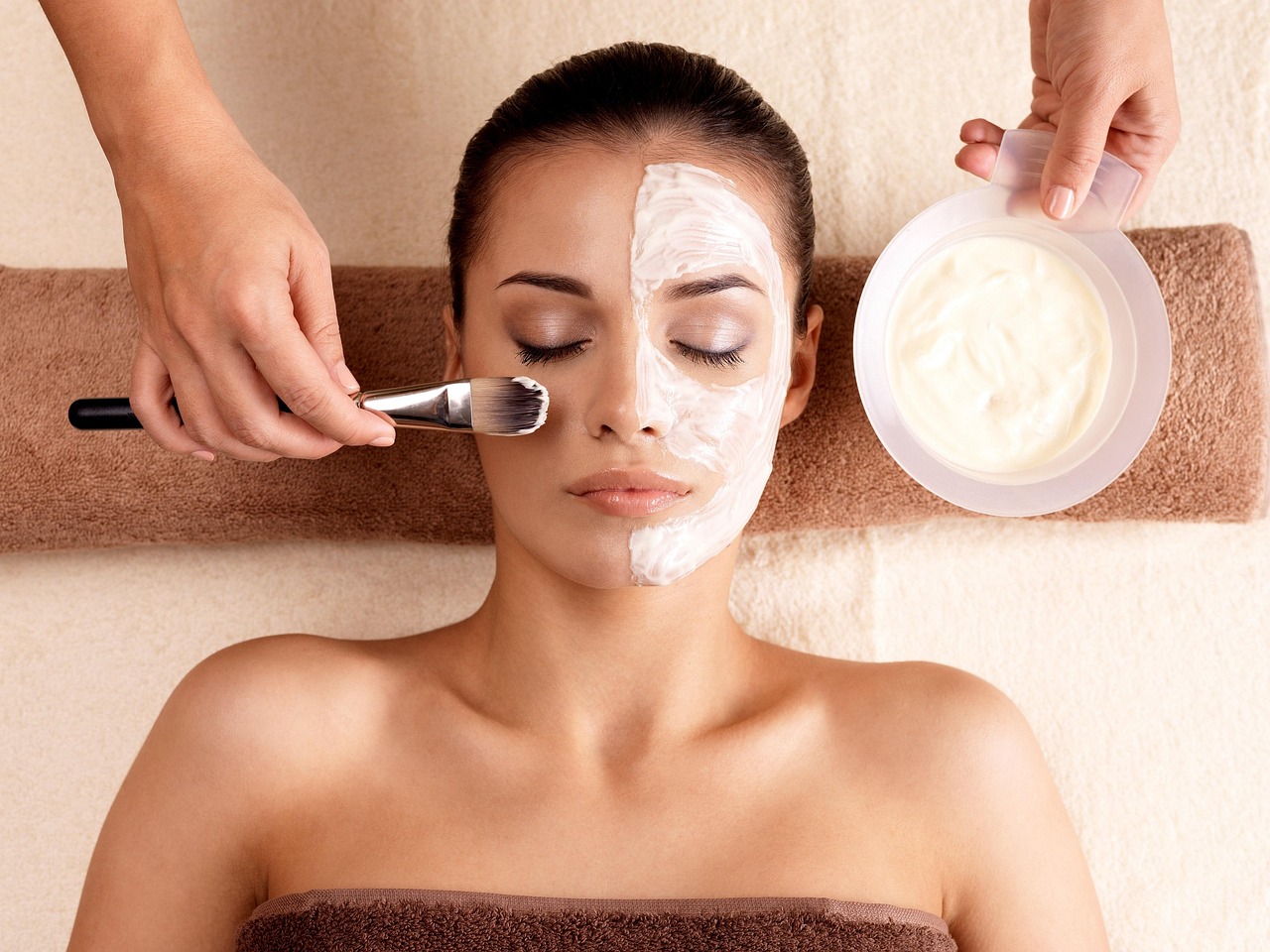This article delves into a variety of Asian massage techniques that are specifically designed to enhance flexibility and strength. By exploring their unique benefits and methods, we aim to provide insights on how these techniques can be seamlessly integrated into your wellness routine.
Understanding Asian Massage
Asian massage encompasses a rich tapestry of techniques that originate from diverse cultures across Asia. Each method is rooted in unique philosophies aimed at improving both physical and mental well-being. From the rhythmic movements of Thai massage to the precise pressure of Shiatsu, these techniques offer holistic approaches to health.
Benefits of Asian Massage Techniques
- Enhanced Flexibility: Regular practice of these techniques can significantly improve your body’s flexibility.
- Improved Circulation: Many Asian massages stimulate blood flow, promoting overall health.
- Stress Reduction: These techniques are effective in alleviating stress and promoting relaxation.
- Muscle Tension Relief: Targeted pressure can relieve tension in tight muscles.
Thai Massage: A Comprehensive Overview
Thai massage is a dynamic blend of acupressure and assisted yoga postures. It promotes flexibility and strength through a series of deep stretching and rhythmic compressions. This unique therapeutic experience is not only relaxing but also invigorating.
Key Techniques in Thai Massage
Techniques such as the use of palms, thumbs, and elbows allow practitioners to target specific muscle groups effectively. This focused approach enhances the overall benefits of Thai massage.
Shiatsu: The Art of Japanese Massage
Shiatsu, a traditional Japanese practice, employs finger pressure on specific points to promote energy flow and relieve tension. This method is particularly effective for enhancing both strength and flexibility.
The Principles of Shiatsu Massage
Rooted in traditional Chinese medicine, Shiatsu focuses on balancing the body’s energy (Qi) through its meridian points. This balance can lead to improved physical health and emotional well-being.
Chinese Tui Na: Therapeutic Massage Techniques
Tui Na is a traditional Chinese therapeutic massage that combines acupressure and manipulation techniques. It aims to restore balance and promote physical strength and flexibility.
Tui Na Techniques for Flexibility
Various techniques, such as kneading and rolling, effectively target tight muscles, enhancing flexibility and promoting relaxation.
Acupressure: Targeting Key Points for Strength
Acupressure involves applying pressure to specific points on the body, alleviating pain and enhancing strength. This non-invasive approach can be a valuable addition to any wellness regimen.
Benefits of Regular Acupressure Sessions
Engaging in regular acupressure can lead to long-term benefits, including enhanced strength, improved flexibility, and overall well-being. It serves as an essential component of a holistic health strategy.
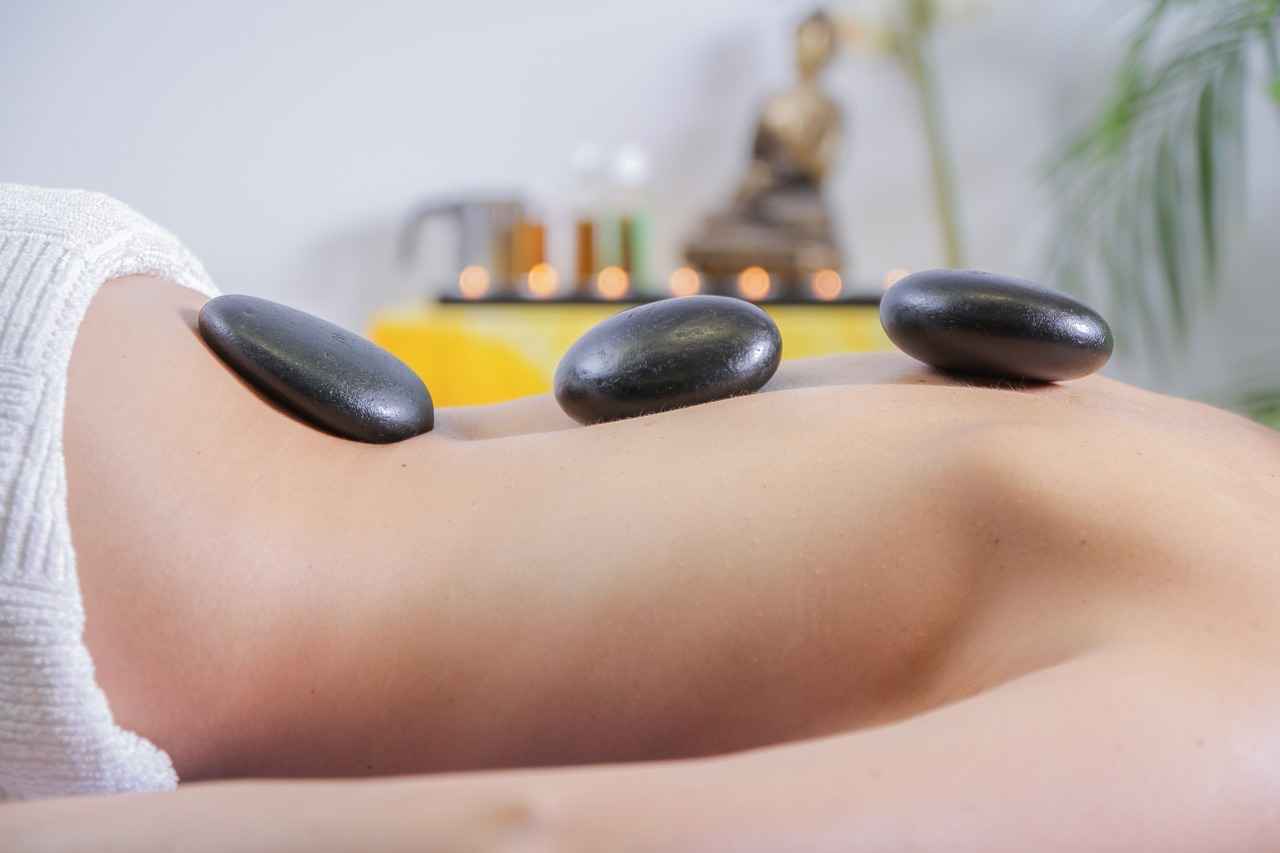
Understanding Asian Massage
Asian massage is a rich tapestry of techniques that have evolved over centuries, drawing from the diverse cultural practices of various Asian countries. Each method is steeped in its own philosophy and approach, aimed at enhancing both physical and mental well-being. This holistic focus is what sets Asian massage apart from other therapeutic practices.
At its core, Asian massage seeks to balance the body’s energy, often referred to as Qi in Chinese traditions or Ki in Japanese. The belief is that a harmonious flow of energy leads to improved health and vitality. Techniques like acupressure, Shiatsu, and Thai massage all emphasize the importance of this energy flow, utilizing different methods to achieve similar goals.
- Thai Massage: This technique integrates stretching and deep tissue work, promoting flexibility and strength through a series of assisted yoga postures.
- Shiatsu: Utilizing finger pressure on specific meridian points, Shiatsu aims to restore energy balance and relieve tension, enhancing overall strength.
- Tui Na: A therapeutic approach from Chinese medicine, Tui Na combines acupressure and manipulation to target muscle tightness, improving flexibility and relaxation.
The beauty of Asian massage lies in its adaptability. Individuals can integrate various techniques into their wellness routines, tailoring sessions to meet their specific needs. Whether seeking relief from stress, enhanced flexibility, or improved strength, the diverse array of Asian massage techniques offers something for everyone.
As more people discover the profound benefits of these ancient practices, the popularity of Asian massage continues to grow. By understanding the unique aspects of each technique, individuals can make informed choices about their health and wellness journeys.

Benefits of Asian Massage Techniques
Asian massage techniques are renowned for their ability to promote both physical health and emotional well-being. These ancient practices, rooted in various cultural traditions, offer a wide range of benefits that can significantly enhance one’s quality of life.
One of the primary advantages of Asian massage is its ability to enhance flexibility. Techniques such as those found in Thai massage involve deep stretching and assisted movements that help to elongate muscles and improve joint mobility. This is particularly beneficial for athletes or individuals engaged in regular physical activity, as increased flexibility can lead to better performance and reduced risk of injury.
In addition to flexibility, these massage techniques are known for their role in improving circulation. By stimulating blood flow through various methods such as acupressure and rhythmic compressions, Asian massage can help oxygenate tissues and promote overall cardiovascular health. Enhanced circulation is essential for delivering nutrients throughout the body and removing toxins, contributing to a more vibrant and healthy lifestyle.
Another significant benefit is the reduction of stress. The calming nature of Asian massage techniques allows individuals to unwind and release pent-up tension. This stress relief is not only beneficial for mental health but also plays a crucial role in physical health, as chronic stress can lead to various ailments. Techniques such as Shiatsu, which focuses on energy flow, help to balance the body and mind, leading to a state of relaxation.
Furthermore, Asian massage techniques provide effective relief from muscle tension. The targeted application of pressure on specific muscle groups helps to alleviate tightness and discomfort. This can be especially helpful for those who suffer from chronic pain conditions or muscle stiffness, allowing for greater mobility and comfort in daily activities.
Incorporating Asian massage techniques into a wellness routine can lead to significant improvements in overall health. With benefits ranging from enhanced flexibility and circulation to reduced stress and muscle tension, these practices offer a holistic approach to well-being that is both effective and enriching.
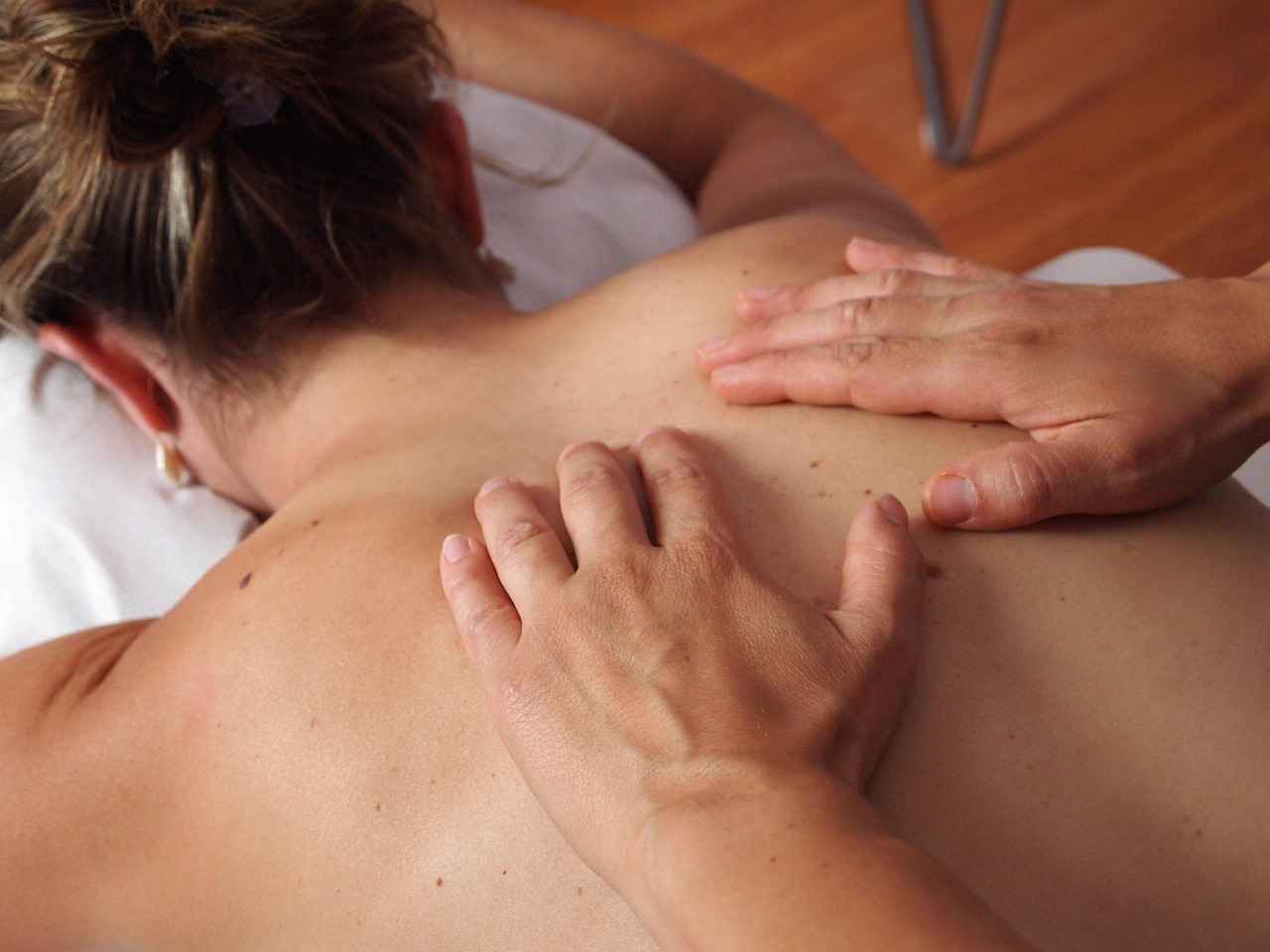
Thai Massage: A Comprehensive Overview
Thai massage is a distinctive form of bodywork that blends ancient techniques and philosophies, focusing on both physical and energetic aspects of well-being. This holistic approach integrates acupressure with assisted yoga postures, creating a dynamic and interactive experience that promotes overall health.
One of the most remarkable features of Thai massage is its ability to enhance flexibility and strength. Practitioners utilize rhythmic compressions and deep stretching techniques to manipulate the body, allowing for a greater range of motion. This method not only targets tight muscles but also encourages the release of tension throughout the body.
Key Techniques in Thai Massage
- Palms and Thumbs: The therapist uses their palms and thumbs to apply pressure along the body’s energy lines, known as Sen lines, which helps in releasing blockages and promoting energy flow.
- Elbows and Knees: These tools are often employed to deliver deeper pressure to specific muscle groups, enhancing the therapeutic effect and allowing for targeted relief of discomfort.
- Assisted Stretching: The therapist guides the recipient into various yoga-like positions, facilitating deep stretches that improve flexibility and promote relaxation.
How Thai Massage Enhances Flexibility
The stretching techniques used in Thai massage are particularly beneficial for athletes and active individuals. By focusing on lengthening the muscles, Thai massage can significantly improve flexibility and range of motion. Regular sessions can lead to noticeable improvements, enabling individuals to perform better in physical activities and reduce the risk of injury.
In addition to its physical benefits, Thai massage also promotes mental clarity and emotional balance. The combination of physical manipulation and mindful breathing can help alleviate stress and anxiety, contributing to a more harmonious state of being. Overall, Thai massage offers a unique therapeutic experience that fosters holistic health and well-being.
Key Techniques in Thai Massage
Thai massage is a unique and dynamic therapeutic practice that combines elements of acupressure, yoga, and meditation. Understanding the key techniques involved in Thai massage can significantly enhance its effectiveness, allowing practitioners to target specific muscle groups for maximum benefit.
- Use of Palms: The palms are essential tools in Thai massage, used for applying broad pressure across larger muscle groups. This technique not only helps in relaxing tight muscles but also promotes blood circulation, enhancing overall well-being.
- Thumb Techniques: Thumbs are used to apply focused pressure on specific acupressure points. This method is particularly effective for relieving tension in localized areas, such as the shoulders and lower back, providing immediate relief and promoting muscle relaxation.
- Elbow Pressure: The elbows are powerful tools in Thai massage, allowing for deep tissue manipulation. This technique is especially beneficial for targeting stubborn knots and tightness in the muscles, making it an essential part of any comprehensive Thai massage session.
- Stretching Techniques: Thai massage incorporates various stretching techniques that promote flexibility and range of motion. By gently stretching the muscles and joints, practitioners can help clients achieve greater mobility and reduce the risk of injury.
- Body Weight Shifts: Utilizing body weight effectively is crucial in Thai massage. Practitioners shift their body weight to apply pressure, allowing for a more comfortable experience for both the therapist and the recipient. This technique ensures that the massage is both effective and sustainable.
By mastering these techniques, practitioners can create a holistic experience that not only alleviates physical discomfort but also promotes mental clarity and relaxation. The integration of these methods in Thai massage makes it a powerful tool for enhancing both flexibility and strength, contributing to a balanced and healthy lifestyle.
How Thai Massage Enhances Flexibility
Thai massage is a unique form of bodywork that intricately combines elements of yoga, acupressure, and traditional massage techniques. One of its most significant benefits is its ability to enhance flexibility. This ancient practice focuses on stretching and lengthening muscles, which is particularly beneficial for athletes and active individuals seeking to improve their physical performance.
During a typical Thai massage session, the therapist uses their hands, feet, elbows, and knees to apply pressure to various points on the body while guiding the recipient through a series of stretches. This combination not only helps to release muscle tension but also encourages a greater range of motion. The following are key aspects of how Thai massage enhances flexibility:
- Dynamic Stretching: Unlike static stretching, Thai massage incorporates dynamic movements that actively engage the muscles, promoting a more significant increase in flexibility.
- Joint Mobilization: The techniques used in Thai massage often involve gentle movements of the joints, which can help to improve joint health and elasticity.
- Increased Blood Flow: The rhythmic compressions and stretches stimulate blood circulation, delivering essential nutrients to the muscles and aiding in recovery and flexibility.
- Mind-Body Connection: Thai massage encourages mindfulness and relaxation, which can help individuals overcome mental barriers that may impede physical flexibility.
For those engaging in sports or rigorous physical activities, incorporating Thai massage into a regular wellness routine can lead to significant improvements in overall performance. By enhancing flexibility, individuals can reduce the risk of injuries and improve their ability to perform various movements with ease.
In summary, the unique techniques of Thai massage not only promote relaxation but also play a vital role in enhancing flexibility. This makes it an invaluable tool for anyone looking to improve their physical capabilities and maintain a healthy, active lifestyle.

Shiatsu: The Art of Japanese Massage
Shiatsu is a traditional Japanese massage technique that emphasizes the application of finger pressure on specific points of the body. This unique approach is rooted in the principles of traditional Chinese medicine, focusing on the flow of energy, known as Qi, through the body’s meridians. By stimulating these points, Shiatsu helps to promote energy flow, relieve tension, and enhance overall well-being.
One of the key benefits of Shiatsu is its ability to improve flexibility. The pressure applied during a session not only alleviates muscle tightness but also encourages the body to release accumulated stress. This release can lead to increased mobility, making it an ideal practice for athletes and individuals who engage in regular physical activity.
Shiatsu techniques often involve a variety of hand positions and movements, including kneading, pressing, and stretching. These methods are designed to target specific muscle groups, enhancing both strength and flexibility. Practitioners often utilize their palms, thumbs, and elbows to deliver precise pressure, adapting the treatment to the individual’s unique needs.
Moreover, Shiatsu is not just about physical manipulation; it also incorporates elements of mindfulness and relaxation. As clients receive treatment, they are encouraged to focus on their breath and connect with their body, fostering a deeper sense of awareness and tranquility. This holistic approach can significantly enhance the effectiveness of the massage, allowing for a more profound release of tension.
Incorporating Shiatsu into a regular wellness routine can yield long-term benefits. Regular sessions can lead to improved posture, reduced muscle fatigue, and enhanced physical performance. Whether you are an athlete looking to improve your flexibility or someone seeking relief from daily stress, Shiatsu offers a comprehensive solution that addresses both body and mind.
The Principles of Shiatsu Massage
Shiatsu massage is a holistic therapy rooted in the principles of traditional Chinese medicine. This therapeutic practice emphasizes the importance of balancing the body’s vital energy, known as Qi, to promote overall health and well-being. By focusing on specific meridian points, Shiatsu aims to release blockages and restore harmony within the body, ultimately enhancing physical strength and flexibility.
The practice of Shiatsu is built on a comprehensive understanding of the body’s energy pathways. These pathways, or meridians, are believed to connect various organs and systems within the body. By applying pressure to these points using fingers, palms, and elbows, practitioners can effectively stimulate the flow of Qi, leading to numerous health benefits.
- Improved Energy Flow: Shiatsu helps to unblock and balance Qi, resulting in increased energy levels and vitality.
- Enhanced Flexibility: The techniques used in Shiatsu involve gentle stretching and manipulation, which can significantly improve flexibility in muscles and joints.
- Stress Relief: By promoting relaxation and reducing tension, Shiatsu can alleviate stress, contributing to mental clarity and emotional balance.
- Muscle Strengthening: Targeted pressure on specific points can help to strengthen muscles, making Shiatsu a valuable addition to any fitness regimen.
Shiatsu practitioners are trained to identify areas of tension and imbalance, allowing them to tailor each session to the individual’s needs. This personalized approach not only addresses physical discomfort but also fosters a sense of overall well-being.
Incorporating Shiatsu into a regular wellness routine can lead to long-lasting benefits. Whether you are looking to enhance flexibility, relieve stress, or improve your physical strength, Shiatsu offers a comprehensive solution grounded in ancient wisdom and modern therapeutic practices.
Shiatsu Techniques for Strength Building
Shiatsu, a traditional Japanese massage technique, is not only renowned for its relaxation benefits but also for its ability to enhance physical strength and posture. By employing specific techniques, Shiatsu practitioners can target key muscle groups, promoting muscle strength and overall body alignment.
Understanding Shiatsu Techniques
The foundation of Shiatsu lies in its application of finger pressure on vital points along the body’s meridians. This method stimulates the flow of Qi, or life energy, which is essential for maintaining physical health. By focusing on specific pressure points, Shiatsu helps to relieve tension in muscles, thereby facilitating improved strength and flexibility.
Key Shiatsu Techniques for Strength Enhancement
- Finger Pressure: Applying sustained pressure with fingers on targeted areas helps in releasing muscle tightness, which can lead to improved strength.
- Stretching Techniques: Incorporating gentle stretches during a Shiatsu session can help lengthen muscle fibers, promoting better posture and strength.
- Joint Mobilization: Techniques that involve moving joints through their range of motion can enhance flexibility and strength, especially in athletes.
The Role of Breathing in Shiatsu
Breathing techniques are integral to Shiatsu. Practitioners often guide clients to focus on their breath, which not only aids in relaxation but also enhances the effectiveness of the massage. Deep breathing can help to oxygenate muscles, making them more responsive to the Shiatsu techniques applied.
Integrating Shiatsu into Your Fitness Routine
Incorporating Shiatsu into a regular fitness regimen can yield significant benefits. Whether used as a recovery tool after intense workouts or as a preventive measure to avoid injuries, Shiatsu can help maintain muscle health and improve overall physical performance. By enhancing muscle strength and supporting proper posture, Shiatsu becomes a valuable ally in achieving fitness goals.
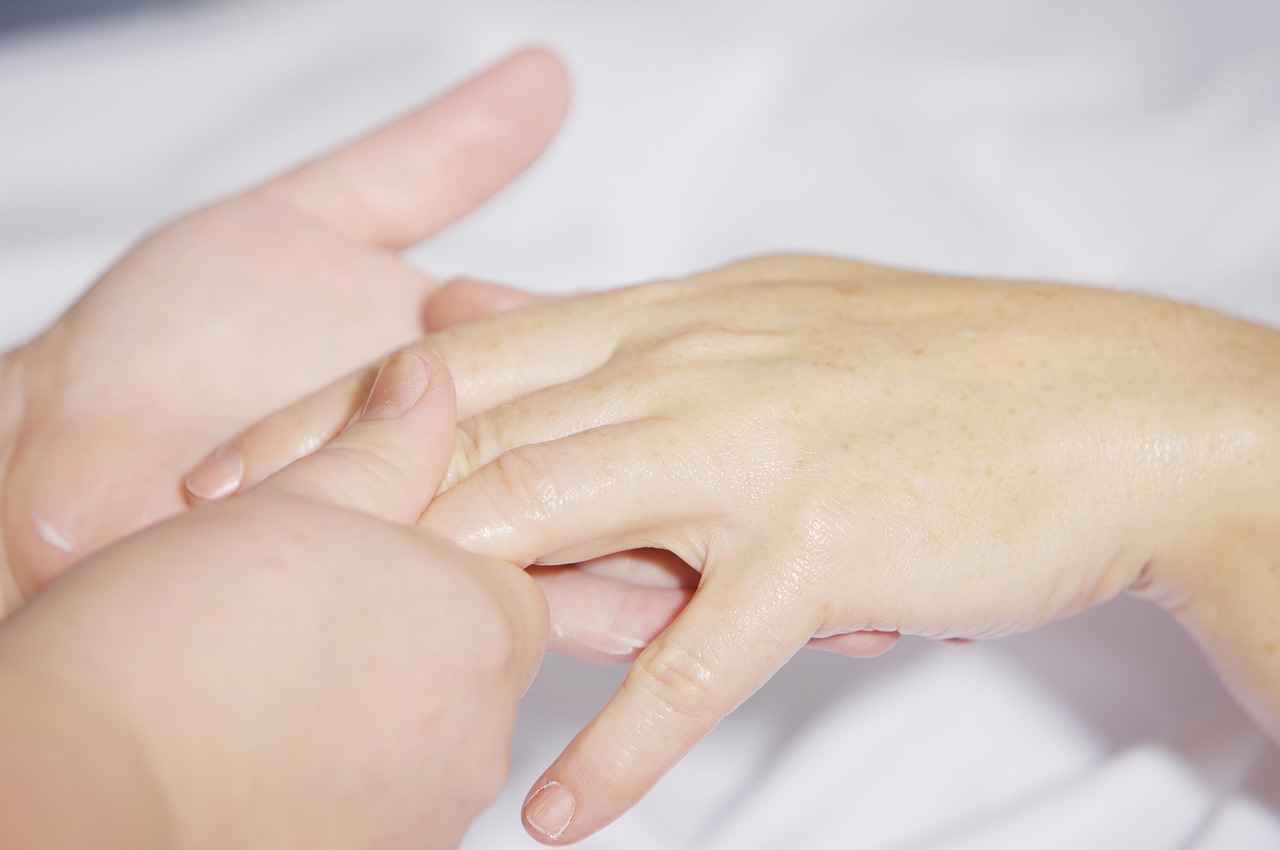
Chinese Tui Na: Therapeutic Massage Techniques
Chinese Tui Na is an ancient therapeutic massage technique that plays a crucial role in traditional Chinese medicine. This practice not only focuses on physical manipulation but also integrates acupressure principles, aiming to restore the body’s natural balance and promote overall wellness. Tui Na is designed to enhance physical strength and flexibility, making it a valuable addition to any holistic health regimen.
The essence of Tui Na lies in its ability to address both muscular tension and energy flow within the body. By targeting specific acupressure points, practitioners can stimulate the body’s natural healing processes. Techniques such as kneading, rolling, and pressing are employed to release tight muscles and improve circulation, which is essential for maintaining optimal health.
One of the primary benefits of Tui Na is its effectiveness in enhancing flexibility. The various techniques used in this massage can significantly help in stretching tight muscles, thereby increasing the range of motion and reducing the risk of injury. This is particularly beneficial for athletes and individuals who engage in regular physical activity.
Moreover, Tui Na is not just about physical benefits; it also contributes to mental well-being. The rhythmic movements and focused pressure can help alleviate stress and promote relaxation, creating a sense of harmony within the body. This dual benefit of physical and mental health makes Tui Na a holistic approach to wellness.
Integrating Tui Na into your regular wellness routine can lead to profound improvements in both strength and flexibility. Whether you are recovering from an injury or simply looking to enhance your physical capabilities, Tui Na can provide the therapeutic support needed to achieve your wellness goals.
In conclusion, Tui Na represents a comprehensive approach to health that merges ancient wisdom with modern needs. By understanding and incorporating Tui Na techniques, individuals can unlock greater physical potential and foster a balanced state of mind.
Tui Na Techniques for Flexibility
Tui Na, a traditional Chinese therapeutic massage, employs a variety of techniques that are specifically designed to enhance flexibility and promote relaxation. Among these techniques, kneading and rolling stand out as particularly effective methods for targeting tight muscles. These techniques are not merely about relaxation; they are integral to the overall health and functionality of the body.
The kneading technique involves applying firm pressure to the muscles, similar to how one would knead dough. This action helps to break down knots and tension in the muscles, allowing for improved blood circulation and oxygen flow. As a result, the muscles become more pliable, leading to enhanced flexibility. Regular application of this technique can significantly aid individuals who experience stiffness due to prolonged periods of inactivity or repetitive movements.
On the other hand, the rolling technique involves a gentle, rhythmic motion that glides over the muscle fibers. This method not only promotes relaxation but also aids in the release of lactic acid buildup, which can cause muscle soreness. By incorporating rolling into a Tui Na session, practitioners can enhance the body’s ability to recover from physical exertion, making it an excellent choice for athletes and active individuals.
Furthermore, Tui Na is unique in its holistic approach. It not only focuses on physical manipulation but also considers the body’s energy flow, or Qi. This integration of physical and energetic work can lead to a profound sense of relaxation and well-being, further contributing to improved flexibility.
Incorporating Tui Na into your wellness routine can yield remarkable benefits. By regularly engaging in these techniques, individuals can experience increased mobility, reduced muscle tension, and overall enhanced physical performance. Whether you’re an athlete looking to improve your range of motion or someone seeking relief from daily stress, Tui Na offers a comprehensive solution for achieving greater flexibility and relaxation.
Integrating Tui Na into Your Routine
Integrating Tui Na into your wellness routine can yield remarkable benefits for both your physical and mental health. This ancient Chinese therapeutic massage technique not only enhances flexibility but also builds strength, making it an essential practice for individuals of all ages and fitness levels.
Tui Na employs a variety of methods, including kneading, rolling, and stretching, which effectively target muscle tension and promote relaxation. These techniques work by stimulating the body’s natural healing processes, improving circulation, and enhancing the range of motion in joints. As a result, regular sessions can lead to a noticeable increase in flexibility, which is crucial for maintaining an active lifestyle.
Moreover, the strengthening aspect of Tui Na cannot be overlooked. By focusing on specific muscle groups and applying pressure to acupressure points, Tui Na helps to build muscle strength and improve overall posture. This is particularly beneficial for those engaged in sports or physical activities, as it can aid in injury prevention and recovery.
Incorporating Tui Na into your routine is relatively simple. Here are some practical tips:
- Schedule Regular Sessions: Aim for at least one session per week to experience cumulative benefits.
- Combine with Other Practices: Pair Tui Na with yoga or Pilates to enhance flexibility and strength further.
- Listen to Your Body: Pay attention to how your body responds and adjust the frequency and intensity of sessions accordingly.
- Consult a Professional: Work with a certified Tui Na practitioner to ensure you receive personalized care tailored to your needs.
In summary, the integration of Tui Na into your wellness routine can lead to significant improvements in both flexibility and strength. By committing to this holistic practice, you will not only enhance your physical capabilities but also foster a greater sense of mental clarity and emotional balance.
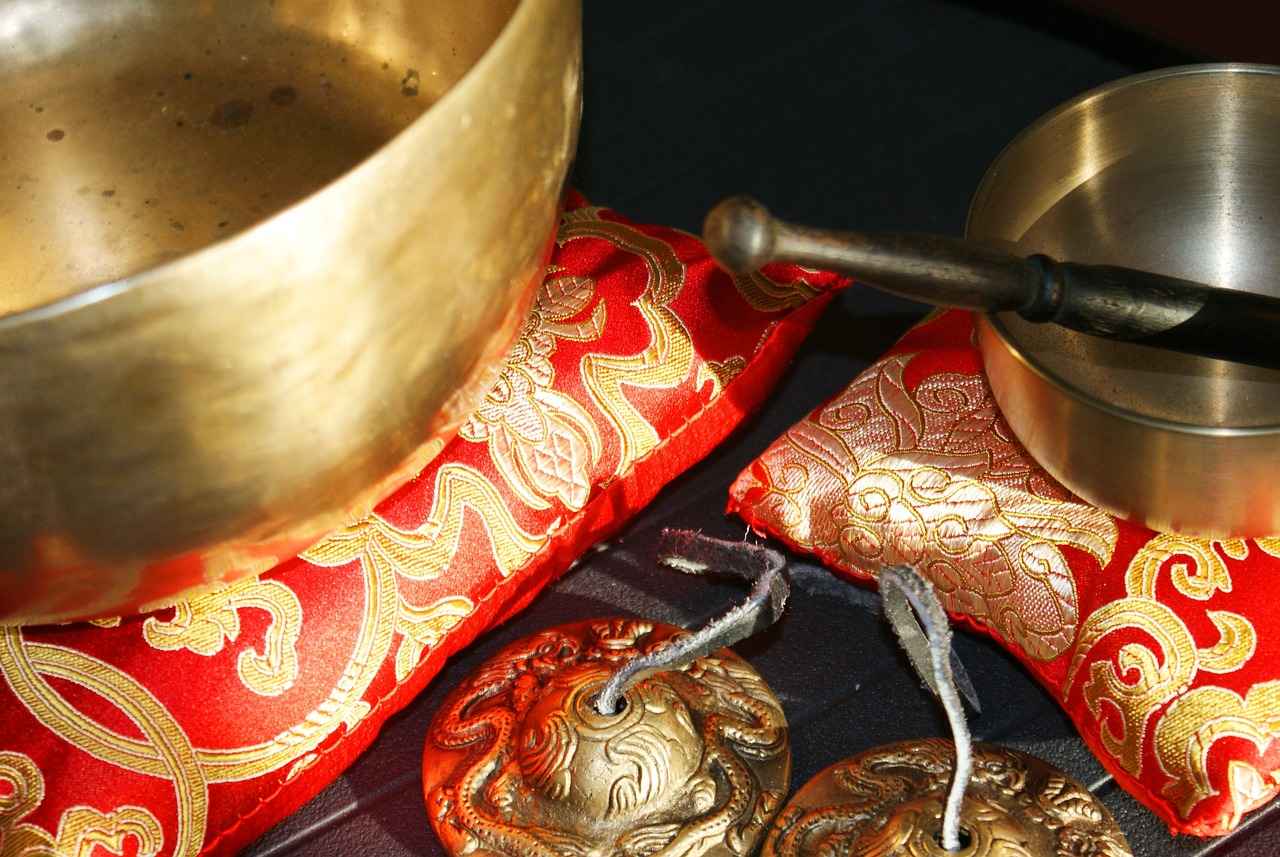
Acupressure: Targeting Key Points for Strength
Acupressure is a holistic healing technique rooted in ancient practices that focuses on applying pressure to specific points on the body. This method is designed to alleviate pain, improve circulation, and enhance overall strength, making it a popular choice for those seeking non-invasive wellness solutions.
By targeting key acupressure points, practitioners aim to stimulate the body’s natural healing processes. Each point corresponds to different organs and systems, helping to restore balance and promote well-being. The technique can be performed using fingers, palms, or specialized tools, offering versatility in its application.
There are numerous acupressure points throughout the body, each with its unique benefits. Some of the most commonly targeted points include:
- LI4 (Hegu): Located between the thumb and index finger, this point is known for relieving headaches and improving overall vitality.
- SP6 (Sanyinjiao): Found on the inner leg, this point supports reproductive health and enhances flexibility.
- GV3 (Yaoyangguan): Positioned in the lower back, this point is effective for alleviating lower back pain and enhancing strength.
Regular application of acupressure can lead to significant improvements in both strength and flexibility. By relieving muscle tension and promoting relaxation, acupressure helps to:
- Enhance muscle recovery after workouts.
- Improve joint mobility and range of motion.
- Increase overall energy levels and vitality.
To maximize the benefits of acupressure, consider integrating it into your regular wellness routine. This can be done through self-application or by seeking the assistance of a trained professional. Regular sessions can lead to long-term improvements in your physical health and emotional balance.
In summary, acupressure is a powerful tool for enhancing strength and flexibility. By understanding and utilizing key acupressure points, individuals can take significant steps towards achieving their wellness goals.
Acupressure Points for Flexibility
Acupressure is an ancient healing technique that focuses on stimulating specific points on the body to promote physical and emotional well-being. Among its many benefits, enhancing flexibility is particularly significant for athletes and individuals seeking to improve their mobility. By applying pressure to certain acupressure points, one can effectively release tension in muscles and improve overall flexibility.
Understanding the key acupressure points that target flexibility can empower individuals to incorporate this technique into their daily routines. Here are some of the most effective acupressure points for enhancing flexibility:
- LI4 (Hegu): Located between the thumb and index finger, this point is known for relieving tension and promoting relaxation throughout the body.
- SP6 (Sanyinjiao): Found on the inner leg, just above the ankle, this point is beneficial for muscle relaxation and can help alleviate tightness in the lower body.
- GB34 (Yanglingquan): Located on the outer side of the knee, this point is effective for relieving stiffness in the legs and improving overall joint flexibility.
- BL23 (Shenshu): Positioned on the lower back, this point can help improve flexibility in the spine and lower body, making it essential for athletes.
To effectively stimulate these points, one can use various techniques, such as:
- Finger Pressure: Apply firm, steady pressure for 30 seconds to 1 minute on each point.
- Massage Techniques: Use circular motions or gentle kneading to enhance the effects of pressure.
- Breathing Exercises: Combine acupressure with deep breathing to maximize relaxation and flexibility benefits.
Incorporating these acupressure techniques into a regular wellness routine can lead to substantial improvements in flexibility and muscle relaxation. Regular sessions not only enhance physical performance but also contribute to overall well-being by reducing stress and promoting a sense of balance.
Benefits of Regular Acupressure Sessions
Acupressure is an ancient healing technique rooted in traditional Chinese medicine that focuses on stimulating specific points on the body to promote healing and wellness. Regular acupressure sessions can significantly enhance your physical and mental health, offering a myriad of benefits that contribute to a holistic health regimen.
- Enhanced Strength: By targeting key acupressure points, this technique can help improve muscle tone and strength. Regular sessions stimulate blood flow and oxygen delivery to muscles, promoting growth and recovery.
- Increased Flexibility: Acupressure can effectively alleviate muscle tightness, leading to improved flexibility. By relaxing tense muscles and connective tissues, individuals may experience greater range of motion in their joints.
- Improved Circulation: One of the primary benefits of acupressure is its ability to enhance circulation. Improved blood flow not only aids in recovery from physical exertion but also supports overall organ function.
- Stress Relief: Regular sessions can significantly reduce stress levels. Acupressure promotes the release of endorphins, the body’s natural painkillers and mood elevators, helping to create a sense of calm and well-being.
- Relief from Pain: Many individuals turn to acupressure for pain management. By applying pressure to specific points, it can alleviate headaches, back pain, and other discomforts, making it an effective non-invasive treatment option.
- Emotional Balance: Acupressure can also help in balancing emotions. By addressing the body’s energy flow, it can reduce anxiety and promote a more positive emotional state.
Incorporating regular acupressure sessions into your wellness routine can lead to long-term benefits that enhance your overall quality of life. Whether you’re an athlete looking to improve performance or simply seeking to maintain your health, acupressure serves as a valuable tool for achieving your wellness goals.
Frequently Asked Questions
- What are the main benefits of Asian massage techniques?
Asian massage techniques offer a plethora of benefits, including enhanced flexibility, improved circulation, reduced stress, and relief from muscle tension. These techniques not only contribute to physical health but also promote emotional balance, making them a holistic approach to wellness.
- How does Thai massage improve flexibility?
Thai massage is unique in its approach as it combines deep stretching and rhythmic compressions. By focusing on lengthening muscles and joints, it significantly enhances flexibility and range of motion, particularly for athletes and individuals who lead an active lifestyle.
- What is Shiatsu and how does it work?
Shiatsu is a Japanese massage technique that utilizes finger pressure on specific points, promoting energy flow and relieving tension. Based on traditional Chinese medicine principles, it aims to balance the body’s energy (Qi) and improve overall physical health.
- Can Tui Na be integrated into a fitness routine?
Absolutely! Tui Na can be a valuable addition to any fitness routine. Its techniques, such as kneading and rolling, effectively target tight muscles, enhancing flexibility and promoting relaxation, which can improve overall performance in physical activities.
- What is acupressure and its benefits?
Acupressure involves applying pressure to specific points on the body to alleviate pain and enhance strength. Regular sessions can lead to long-term benefits, including increased strength, flexibility, and overall well-being, making it an essential part of a holistic health regimen.
